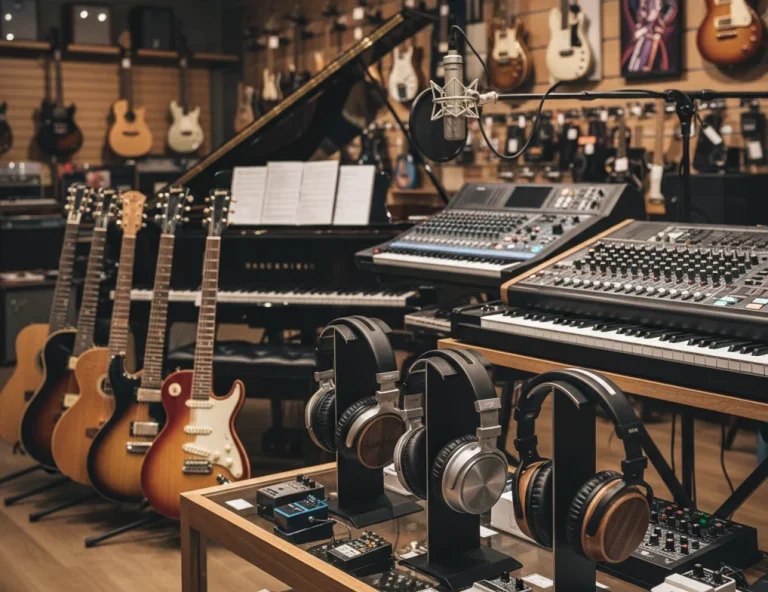All Topics
- Alchemizing Music Concepts for Students
- Artist Spotlight
- artium gift card
- Artium Maestros
- Artium News
- buying guide
- Carnatic Music
- Devotional Music
- Editorials by Ananth Vaidyanathan
- Film Music
- Guitar
- Hindustani Classical Music
- Indian Classical Music
- Indian Folk Music
- Insights
- Instruments
- Karaoke Singing
- Keyboard
- Kids Music
- maestros
- Music Education
- Music for Kids
- Music Industry
- Music Instruments
- Music Legends
- Music Theory
- Music Therapy
- Piano
- piano guide
- Success Stories
- Tamil Film Music
- Telugu Film Music
- Time Theory
- Tools
- Uncategorized
- Vocal Singing
- Vocals
- western classical music
- western music
- Western vocal music
Folk Music – The Combinations of Traditional Stories, Art & Melody
Folk Music – The Combinations of Traditional Stories, Art & Melody
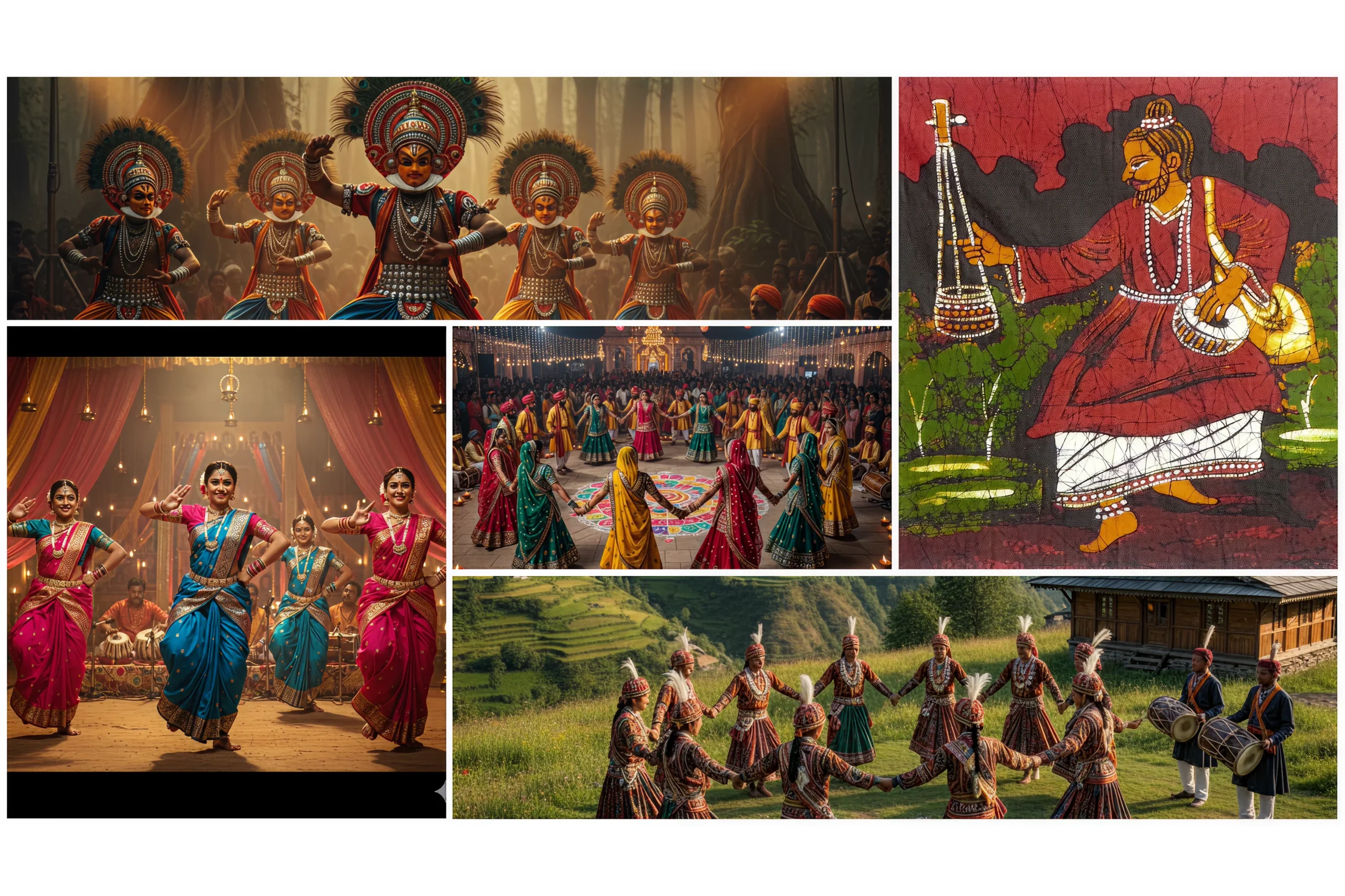
Table of Contents
Music is related to life, and different episodes and occupations have enriched the oeuvre of music in manifold ways. Thus, a category of music has emerged that does not strictly adhere to the grammar of music but remains soulful and vivid, known as Folk Music.
Though not influenced by the regime of music, it is influenced by the lives of people in different geographies and has borne the imprint of the culture and history of other times. During the Vedic period, when the lineage of Indian music originated from the Sama Veda, the practice of music began in the privileged strata of society.
Gradually, through the emergence of “Prabandha Geet” and “Dhruvapada Geet”, the genre of music is today divided into various branches. Rooted in age-old traditions, folk culture represents the life, beliefs, customs, and artistic expressions of the common people, especially those in rural and tribal areas.
Folk music in India is not written or formalized like classical traditions, but is passed down orally through generations. It includes folk music, dance, art, festivals, storytelling, rituals, and crafts, each deeply connected to the daily life and environment of a particular community.
Folk traditions are often closely tied to nature, agricultural cycles, festivals, and local deities, making them an essential part of social and religious life. They serve not only as entertainment but also as a means of education, community bonding, and preservation of history and values.
Influence of Folk Music in Modern Times
In modern times, while globalization and urbanization have influenced lifestyles, efforts are being made to preserve and revive India’s folk heritage, recognizing its importance in maintaining the country’s cultural identity. Through platforms like an online music learning platform, students around the globe can access this rich heritage.
Folk music is a genre that has nurtured its culture, language, rituals, traditions, and art through music throughout the history of societal evolution. The unity of melody amidst the diversity of India is exemplified by folk music, which has enriched Indian popular music and film music in many ways. Today, dedicated online music classes make it easier than ever to explore and master these foundational folk styles.
Folk Music and Folk Culture in Different Provincial Contexts
Folk culture refers to the traditional customs, beliefs, practices, and material traits of a specific, often rural or close-knit group of people. It is typically passed down through generations orally or by example and is strongly tied to a particular location or community.
The aspects represented in the Folk culture are:
- Folk culture is very much Localized, it is found in small, homogenous communities and closely linked to geographic areas.
- It is Community-Oriented. This statement emphasizes group identity, shared values, and communal activities.
- We can find it very slow to change. Unlike popular culture, folk culture resists rapid change and globalization.
- Folk is a genre of music that is transmitted orally. Its knowledge is shared through storytelling, music, dance, and rituals.
- The uniqueness is that it is Handmade or Custom-Made. These arts, clothing, and tools are often crafted by hand using local materials.
- Folk is environmentally based. The local climate, geography, and natural resources influence it.
- It is tradition-based. Passed down from generation to generation, often unchanged over long periods.
Folk Music Is a Popular Culture
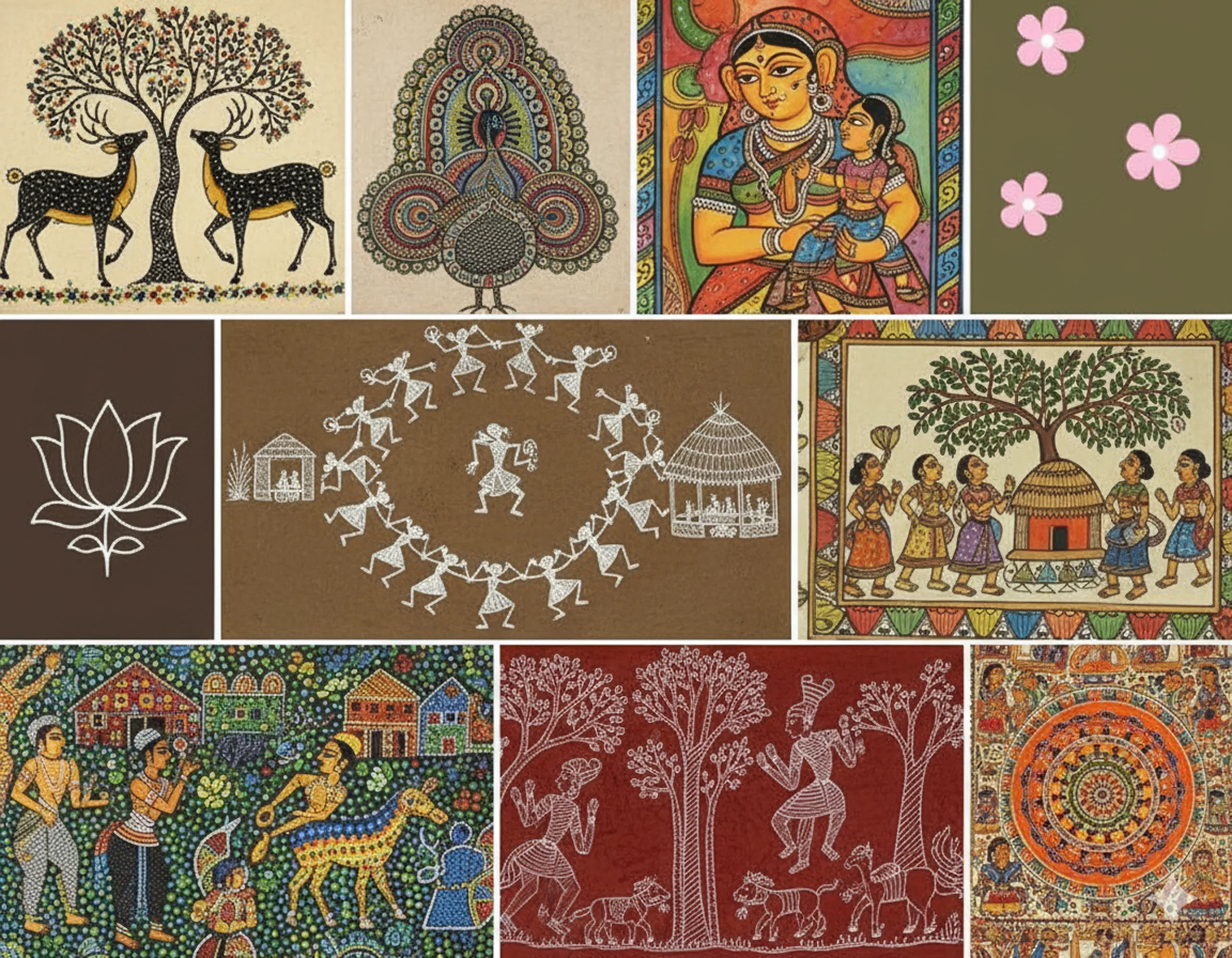
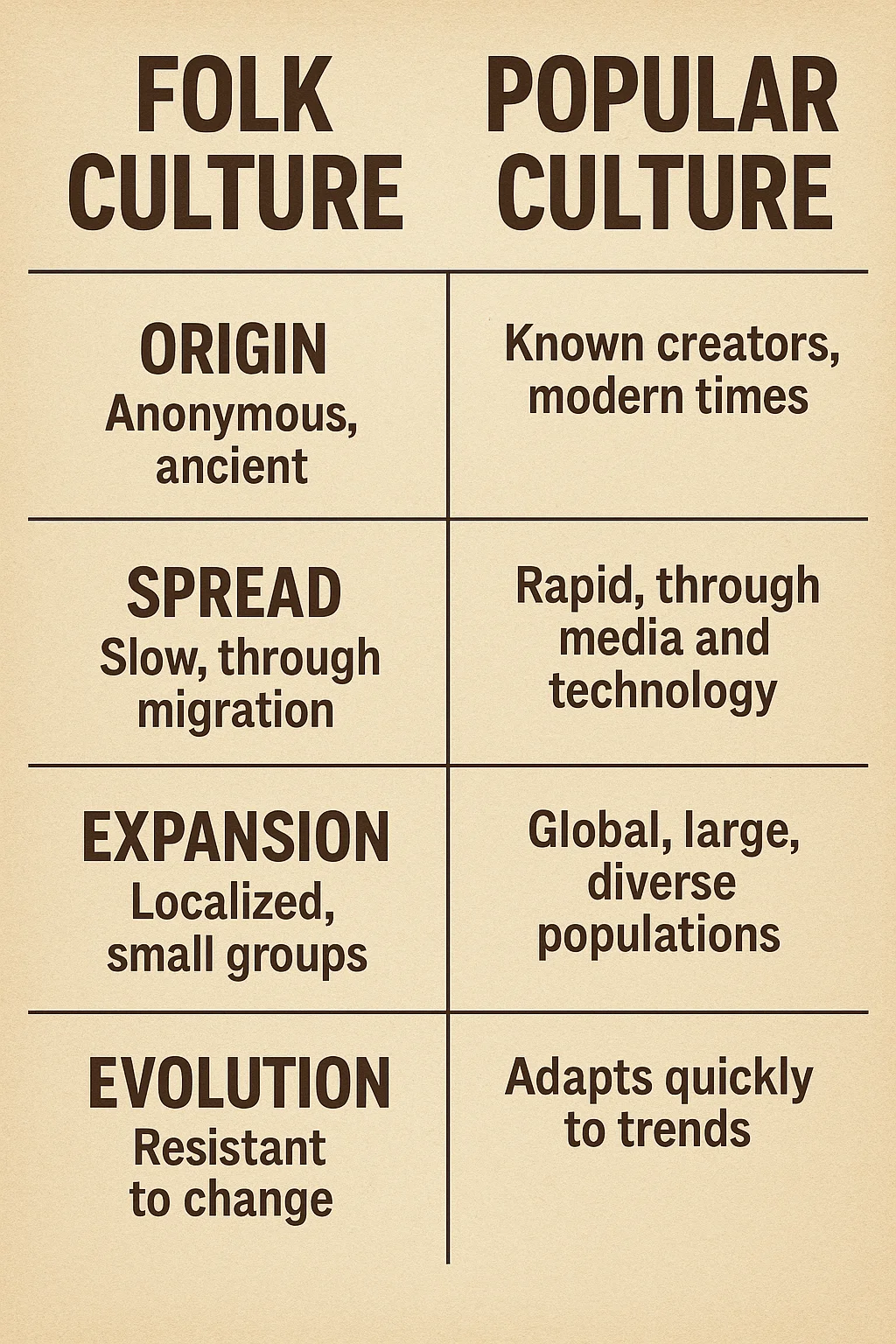
Regional Diversity Plays Out In Indian Folk Traditions
Folk art forms in India encompass dance, music, theatre, painting, and crafts, and they are often deeply connected to the agricultural, religious, and social practices of local communities. Indian folk music is an incredibly diverse and rich tradition that spans the entire country, with each region contributing its unique styles, instruments, and forms.
It often reflects the cultural, social, and spiritual life of the people, and plays a central role in festivals, rituals, and everyday life. The music is deeply connected to the agricultural cycles, religious practices, and communal life of the people.
1. Rajasthani Folk Music
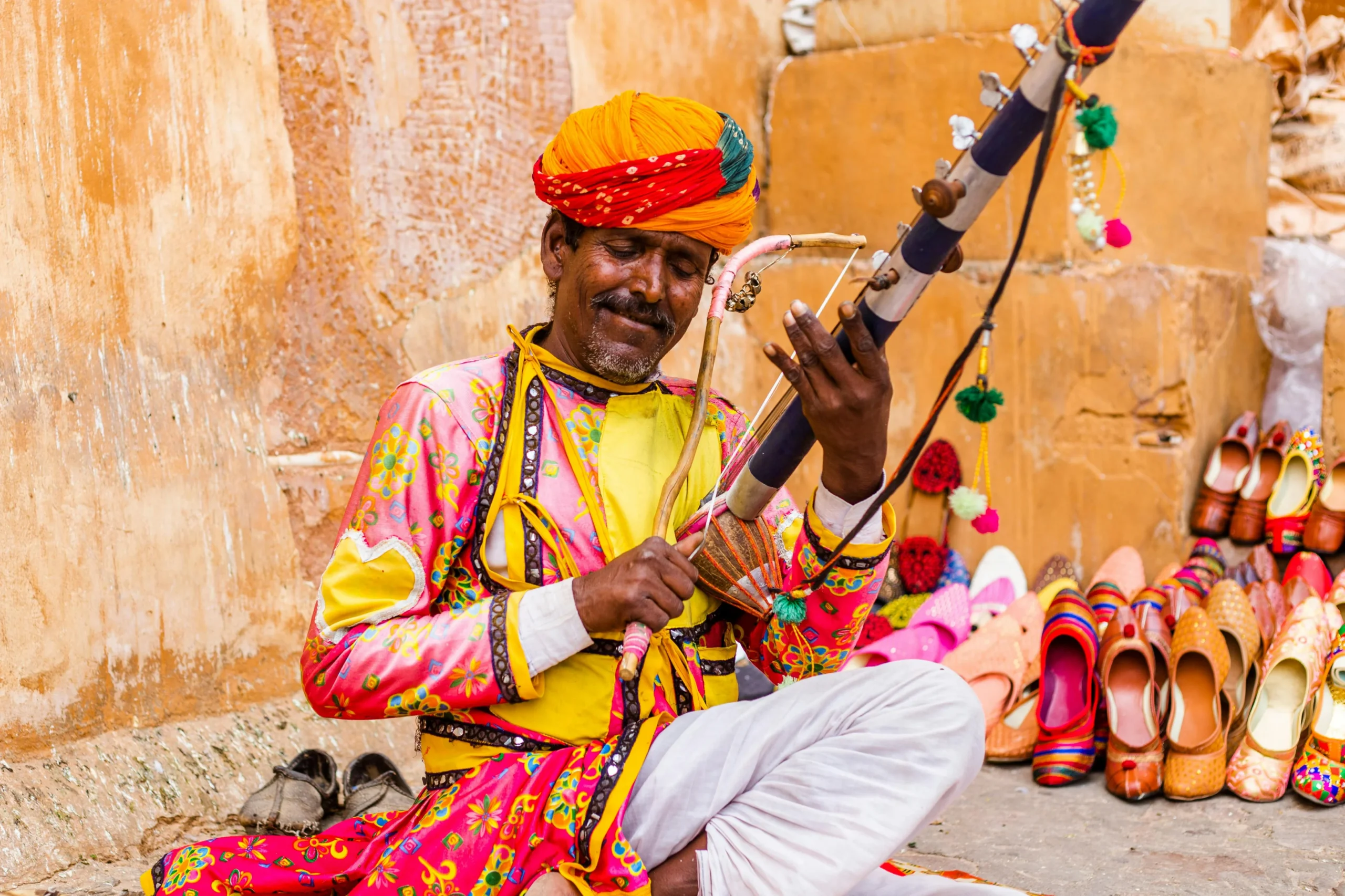
Rajasthan is a region known for its colorful culture, and its folk music is equally vibrant. It reflects the harsh desert landscape, the nomadic life, and the royal grandeur.
Popular Genres:
- Ghoomar: A folk dance that also features accompanying music, celebrating festivals or significant life events.
- Kalbeliya: A dance and music form associated with the Kalbeliya community, famous for its snake-charming dance.
- Maand: A poetic and soulful form of music often sung at royal courts, reflecting the cultural heritage of Rajasthan.
2. Gujarati Folk Music
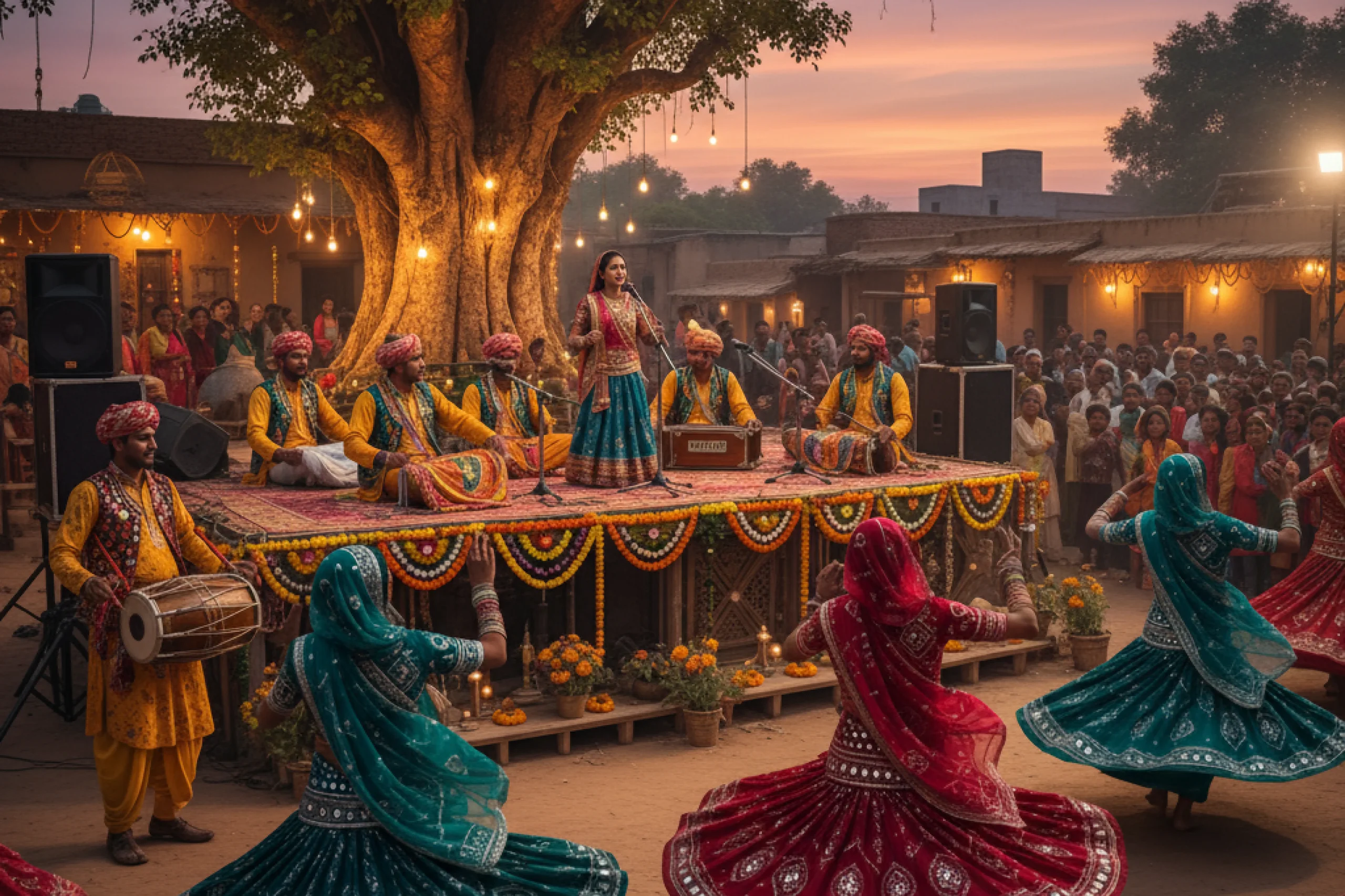
The folk music of Gujarat is deeply rooted in its agricultural society and rich spiritual practices.
Popular Genres:
- Garba: A devotional dance form performed during the Navratri festival, often accompanied by songs sung in a circular formation.
- Dandiya: A dance form performed with sticks (dandiya), especially popular during the festival of Navratri.
3. Bengali Folk Music
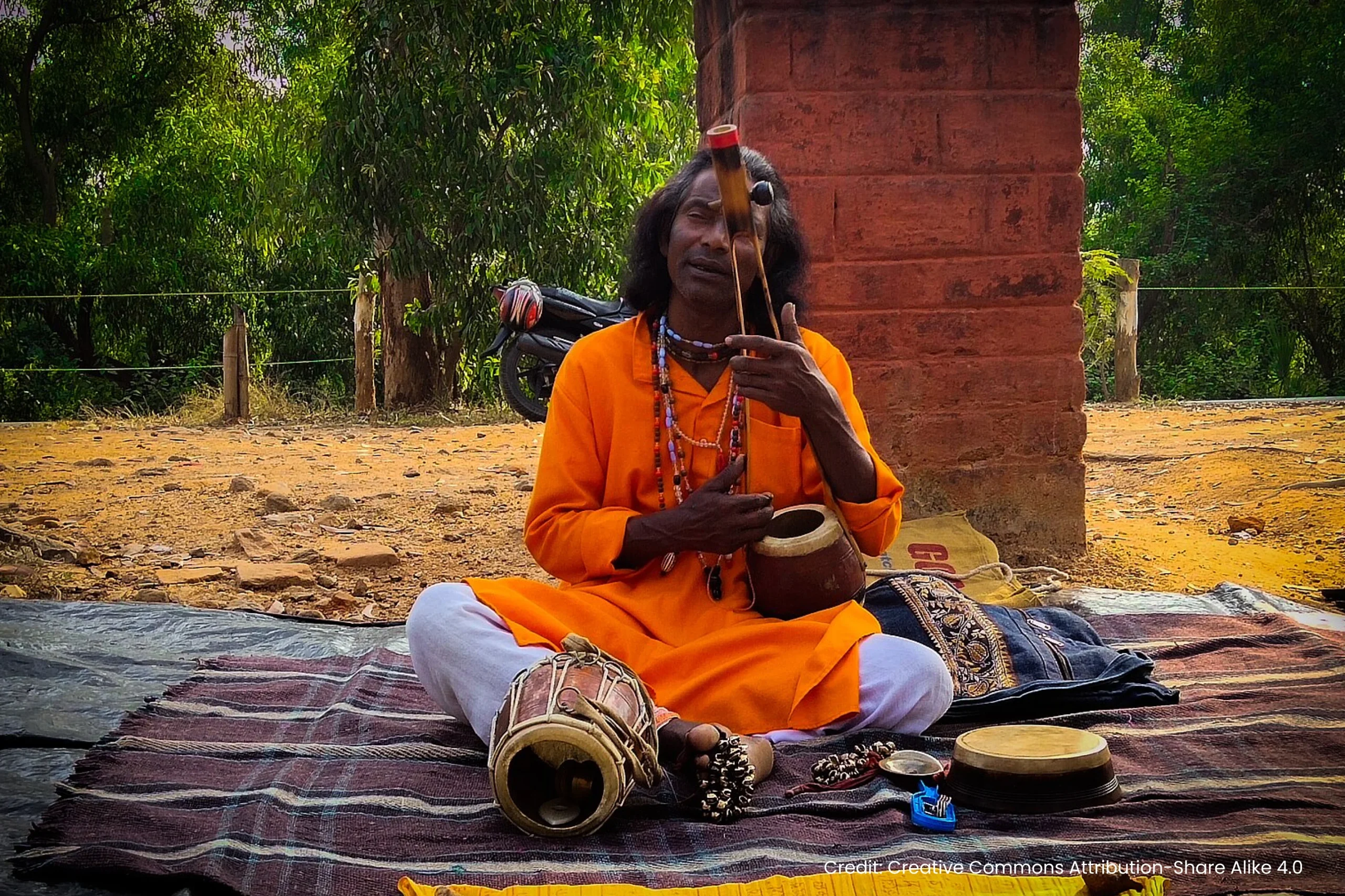
Bengal has a rich tradition of folk music, dance, and art that reflects rural life, social issues, and spiritual devotion.
Popular Genres:
- Baul Music: A mystical form of folk music, deeply spiritual, with themes of love, devotion, and unity. The Baul singers often accompany themselves with the ektara (a single-string instrument).
- Jhumur: an ancient folk music and dance tradition from West Bengal.
- Bhatiyali: It is the folk music of West Bengal. It is related to the song of the river, sung by the river through her boatsmen.
- Bhawaiya: It is a musical form or a popular folk music that originated in North Bengal.
4. Tamil Folk Music
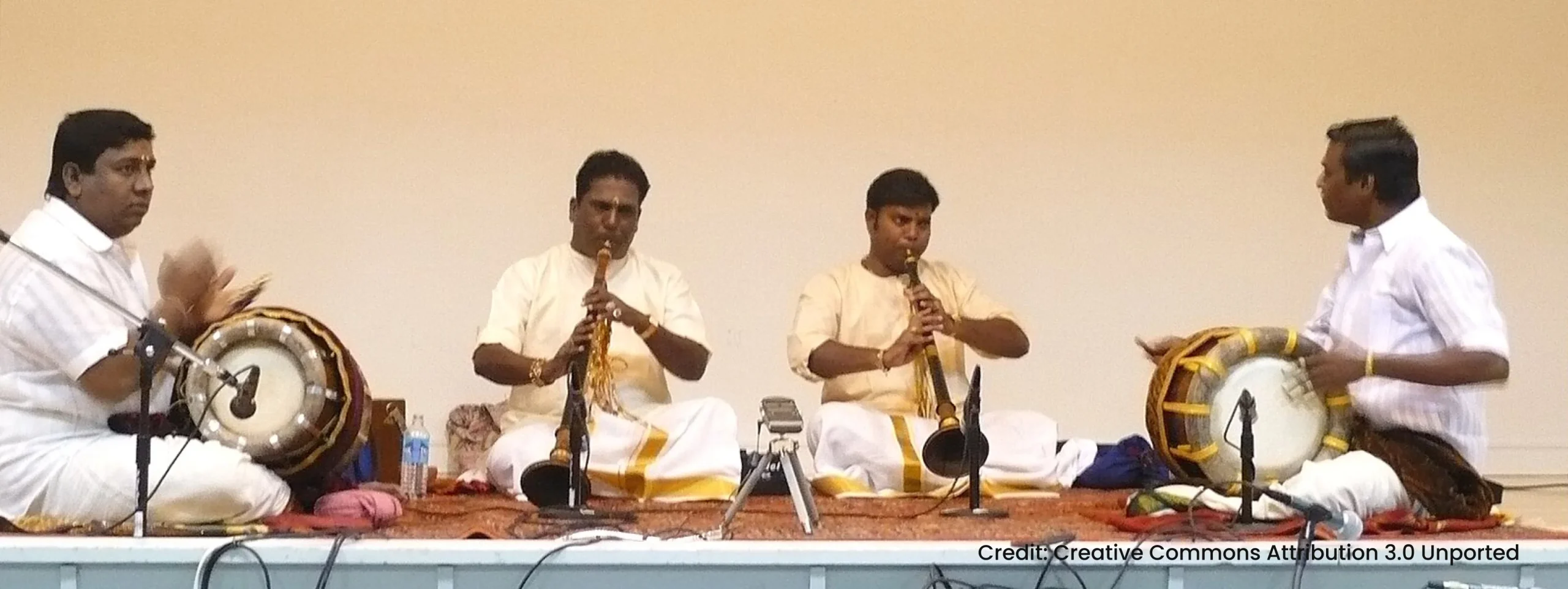
The folk music of Tamil Nadu includes a rich mix of religious, cultural, and celebratory traditions.
Popular Genres:
- Karaga: A unique ritualistic dance and music form dedicated to the goddess Draupadi. The performance involves balancing a decorated pot (karaga) on the head while dancing to the rhythm of drums.
- Tamil Folk Songs: These songs range from simple, earthy tunes sung during harvest to complex religious hymns and ballads.
5. Marathi Folk Music
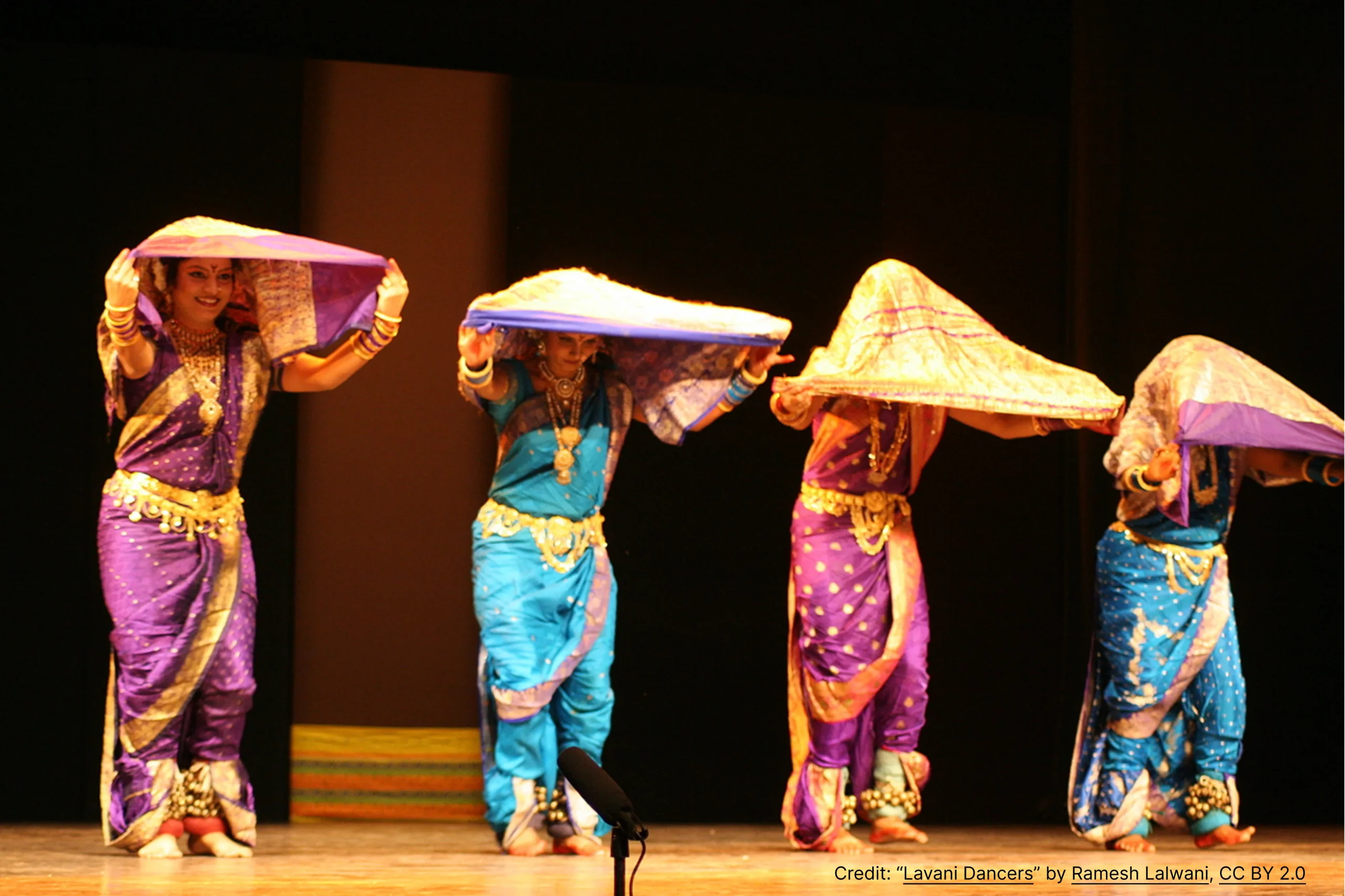
The folk music of Maharashtra is full of energy and often involves collective participation in community festivals and rituals.
Popular Genres:
- Lavani: A dance and music form that originated in Maharashtra, it is performed with rhythmic drumming and graceful movements, often expressing themes of love, longing, and everyday life.
- Tamasha: A folk theater form that blends acting, dancing, and folk music, often depicting tales of romance, societal issues, or mythological stories.
6. Assamese Folk Music
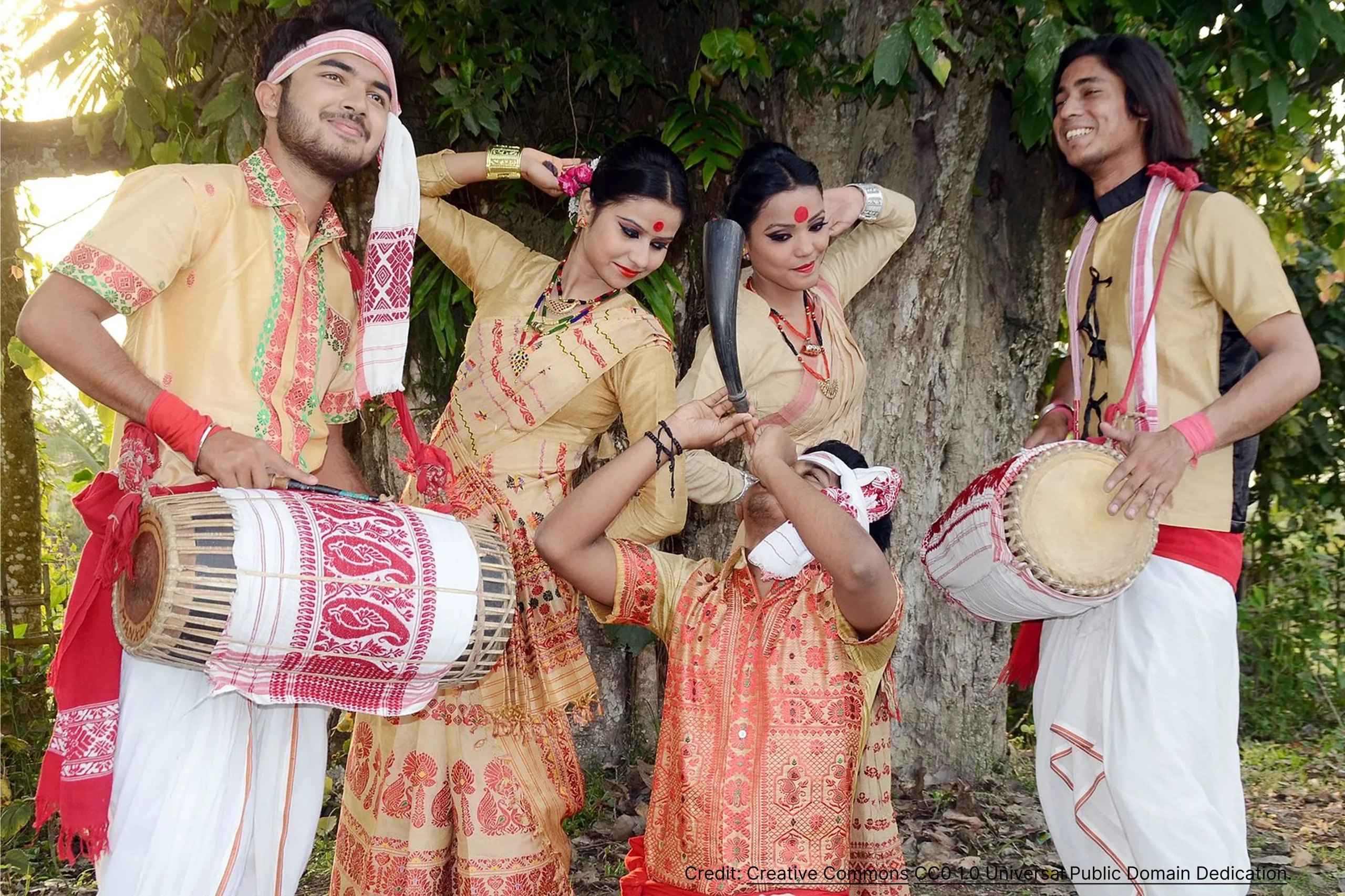
Assam’s folk music is tied closely to the rhythms of nature, the monsoon, and agricultural life.
Popular Genres:
- Bihu Songs: Sung during the Bihu festival, these songs celebrate nature, love, and the agricultural cycles.
- Zikir: A devotional form of music sung by the Muslim communities in Assam, blending Sufi influence with local folk styles.
7. Karnataka Folk Music
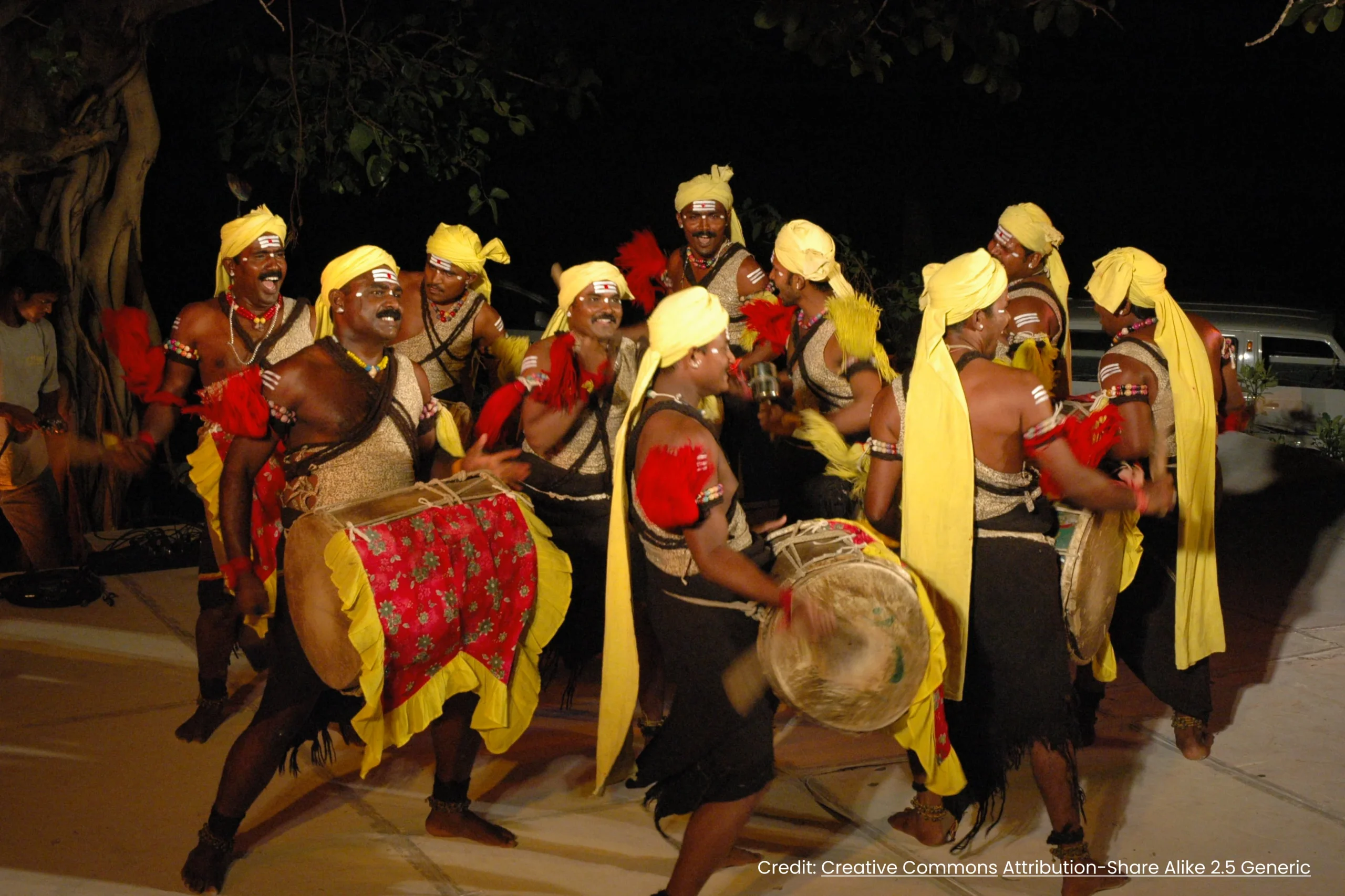
Karnataka has a rich tradition of folk music that blends both classical and regional influences, with a strong presence of devotional songs.
Popular Genres:
- Yakshagana: A traditional dance-drama form that is accompanied by folk music and involves elaborate costumes and rhythmic drumming.
- Rural Folk Songs: Often associated with farming life, these songs are typically performed to ease the labor of daily tasks.
8. Himachali Folk Music
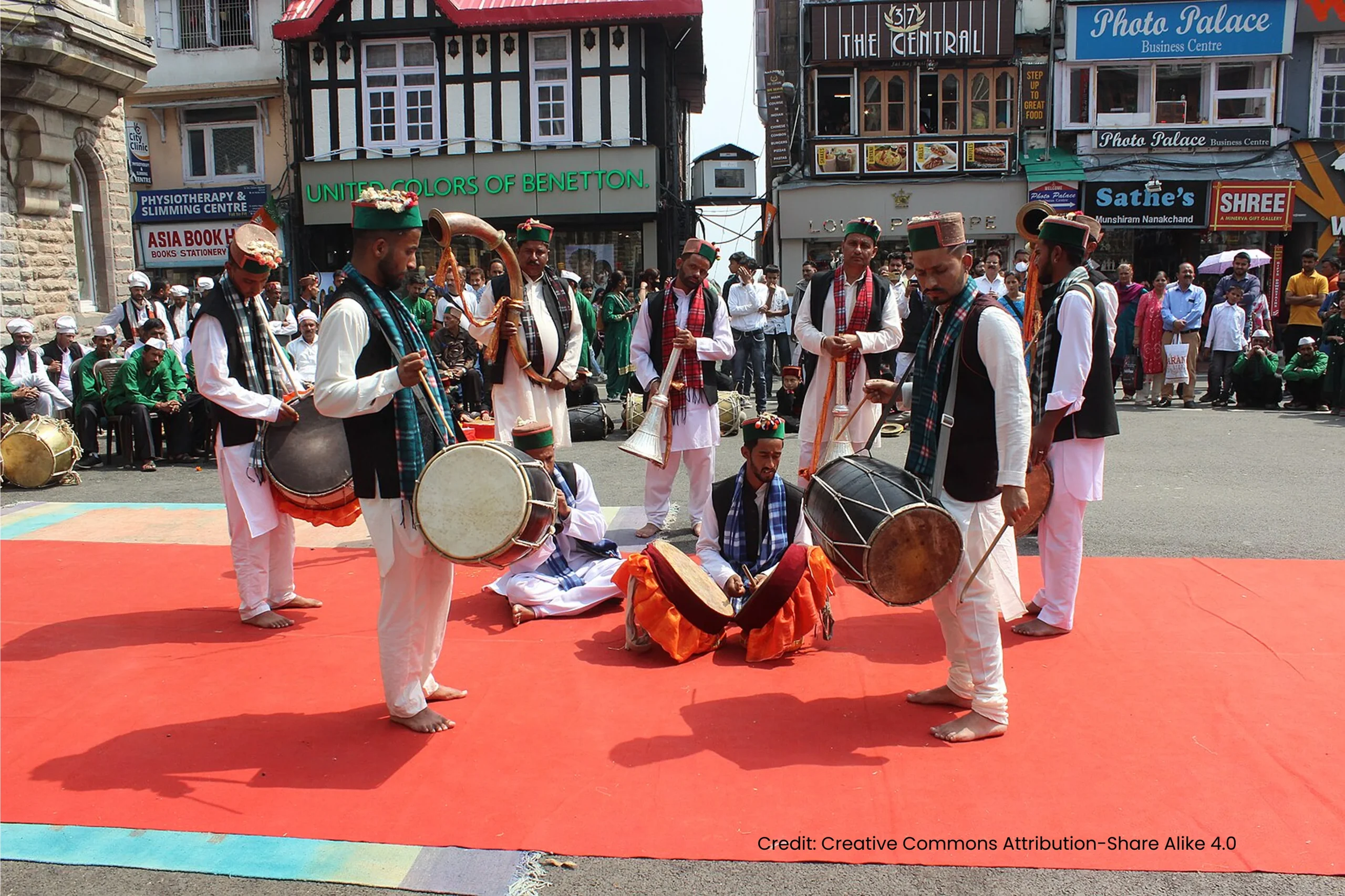
The folk music of Himachal Pradesh is closely tied to the natural environment and local festivals..
Popular Genres:
- Nati: A traditional dance and music form where people celebrate harvests or special events, often accompanied by instruments like the dhol and nagada.
- Himachali Folk Songs: Sung during festivities like the Kullu Dussehra, these songs are often simple but full of emotion, celebrating nature and life.
9. Odia Folk Music
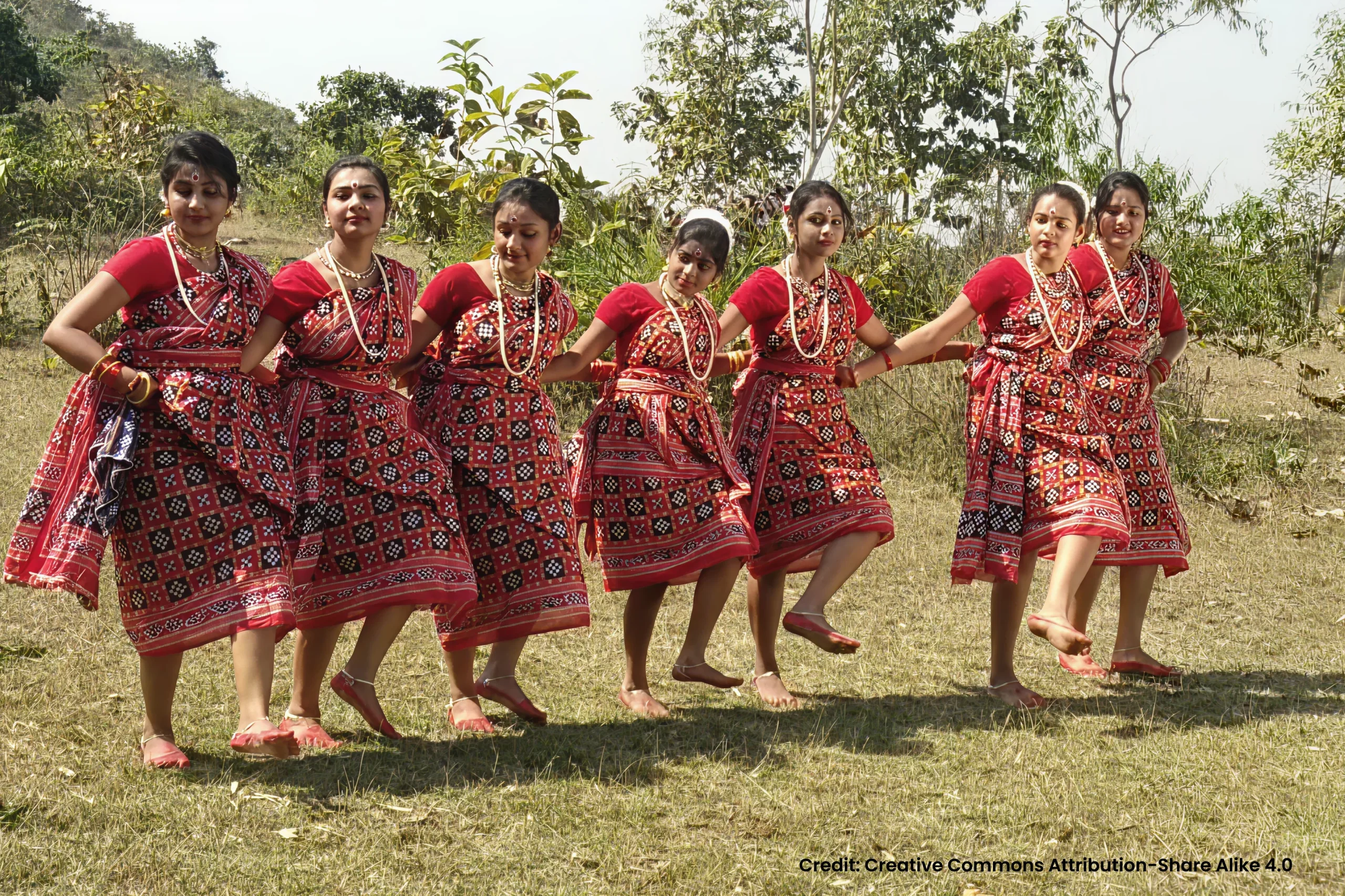
Sambalpuri folk: The folk music of Odisha is deeply tied to its religious and spiritual life, often reflecting the devotion to Lord Jagannath.
Popular Genres:
- Kirtan: Devotional singing, often accompanied by rhythmic clapping and the playing of the mardala (a kind of drum).
- Sambalpuri: A traditional dance form of Odisha that incorporates music, storytelling, and drumming.
Folk Music Influence on Popular and Film Songs
Indian folk music has had a profound influence on Popular and Film songs. Over the decades, Film songs have borrowed from regional folk traditions to create songs that resonate with both traditional and contemporary audiences. It is not just about incorporating old melodies but also about maintaining the essence of India’s cultural diversity, while blending it with popular music styles.
Bollywood films set in rural or semi-rural settings often feature folk music to create authenticity. Film music usually uses folk songs to convey the ethos of a region, express local emotions, or deepen the storyline, particularly in rural or village-based settings. These films are set in rural or semi-rural environments that often feature folk music to enhance authenticity.
Folk songs of film often use regional folk instruments like the dholak, tabla, dhol, sarangi, tumbi, sitar, flute, morchang, and dholki, among others. Many folk-influenced songs use specific regional rhythms, like the dhol beats in Punjabi folk music, Bhangra rhythms, or the vibrant rhythms of garba and raas from Gujarat.
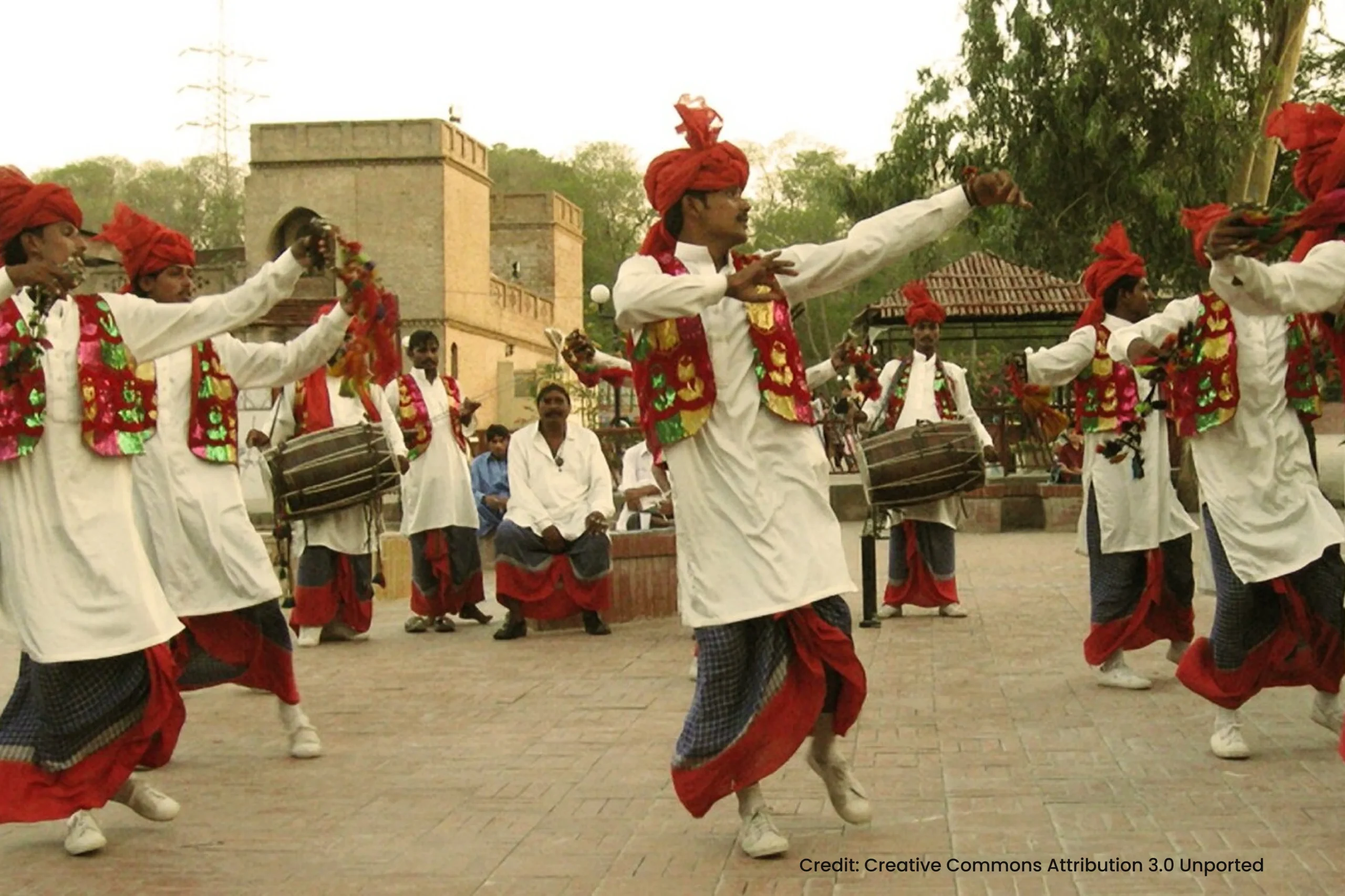
Bollywood has used folk music to highlight the diversity of India. From the earthy sounds of Rajasthani folk music to the spiritual tunes of Baul singers, Film music incorporates these influences to give the music an authentic regional feel.
Examples:
1) “Nagada Sang Dhol” is heavily influenced by Garba and Dandiya dance forms from Gujarat. The rural flavor and energy expressed in this song, accompanied by the drums, is entirely in the style of Garba.
2) “Monta Re” from the Bollywood film Lootera draws its folk influences from the Baul music tradition of Bengal. The spiritual appeal of Baul songs lies in how Baul saints express people’s feelings through songs by combining the inner soul with the sense of life, as seen in this song.
3) “Chaiyya Chaiyya” song draws on elements of Sufi and Indian folk music to create an iconic, foot-tapping song. It is inspired by the Punjabi folk song “Thaiyya Thaiyya” by the Sufi poet Bulleh Shah. How love can be expressed in the form of a Sufi prayer is expressed in the rhythm and harmony of the lyrics of this song.
4) The “Ghoomar” song is a classic example of Rajasthani folk music, paying homage to the traditional Ghoomar dance of Rajasthan. It comes from the Rajasthani word “ghumna,” which refers to a rural cultural movement found in Rajasthani songs, characterized by its circular dance steps.
Learn How Indian Folk Rhythms Power Hindi Film Music at Artium Academy
Indian folk music is a living, breathing tradition that has adapted to the changing times but still retains its deep connection to the land, the people, and their beliefs. Each region has developed its own distinctive style, and even within regions, there can be vast diversity in musical practices.
Also, Folk music in Popular and Hindi Film Music is an essential tool for cultural expression, often providing films with both emotional depth and a sense of connection to India’s vast traditions. The combination of Ragas, Talas, and the use of instruments has brought together the flavors of different regions of India in film music. Artium Academy teaches how the diversity of Indian music has created unity and enriched the genre of film music.
From energetic dance numbers to poignant ballads. Bollywood continues to merge regional folk sounds with contemporary music, creating hits that celebrate both India’s diversity and the global appeal of its cinematic music.
These come under film music, and in Artium Academy, we explain to students how these styles are used through film music. In our 1:1 online music classes, we also strive to enrich students through many other genres of film music.
FAQs on Folk Music
Classical music is a blend of Vedic culture and music, while folk music is a blend of rural culture and music. The rural life of the Vedic civilization was different from the life of pre-Vedic tribals. Although they were not part of the original Vedic culture, they gave cultural form to their rural folklore, philosophy, and beliefs.
Thus, alongside classical music, folk music flows in a parallel hierarchical structure throughout ancient, medieval, and modern times. Folk music is about the pure life of people, associated with sorrow, pain, joy, and celebration.
The instruments used here are made from everyday objects and materials. On the other hand, raga music embodies the Margian and courtly elegance, manifested through specific structures and their complex performances. Although the phrases and rules of raga are not published in their original form, raga melodies are mixed into folk music.
Folk music serves as an oral archive of rural life, reflecting people’s lives, customs, clothing, and journeys in the melody, lyrics, and style of songs. Folk songs help us understand the culture and festivals of different states in our country, making them very important in regional celebrations.
Special festivals are celebrated through Bihu songs, spiritual pursuits are revealed through Baul, and Lavani lyrics are characterized by themes of love, romance, and social commentary, often expressed through powerful and rhythmic verses. The props and instruments used with all these songs reveal the unique regional flavor. Folk songs thus highlight the traditions of their communities over the ages.
Many folk songs revolve around daily life, festivals, and the changing seasons. The following are some of the most popular regional folk music forms and their cultural significance. Villu Paatu, or “bow song,” is a storytelling musical form where the narrator and singers use a large, bow-shaped instrument. The song and rhythm make it an accessible and engaging way to pass down cultural narratives and folklore. Bauls are a group of mystical minstrels from Bengal whose songs express a philosophy of universal love and spiritual liberation. The Baul song is about finding God within the human soul.
Bihu songs are energetic, accompanied by instruments like the dhol and pepa (a flute made from a buffalo horn), and celebrate the arrival of spring, nature, and the joy of community life.
Dandiya Raas dance represents a mock fight between the goddess Durga and the demon Mahishasura. Powada is a narrative form that tells tales of heroic deeds and historical events. Each region’s music captures the spirit, lifestyle, and history of its people.
Folk music has influenced various genres of music for centuries. Just as Punjabi folk inspired Tappa songs, Doab folk influenced Thumri Dadra songs; Bollywood film music is also influenced by folk. Some songs use the Punjabi, Bhojpuri, or Dogri languages. However, Baul, Garba, Rajasthani, Bihu, and Himachali style songs have been used in Bollywood.
How Indian music maintains unity in its raga, rhythm, presentation, regional languages, and cultural diversity is a part of Artium Academy’s teaching base. We teach students through film songs how film music has been influenced by folk-style songs.
The film music has been adapted to suit the needs of different plots in Bollywood films. It is especially commendable how the melody and rhythmic flow have been universally appreciated in a new form, transcending language differences in Film Music. That is the focus of our teaching.
With the modernization of the times, it is time to express Folk Music in a new way to give more respect to cultural heritage. Various ancient songs of Indian heritage are being presented in Coke Studio pattern or Fusing pattern, with Western instruments. Our goal is to give a new look to the old style and keep it alive through the quality of today’s generation.


